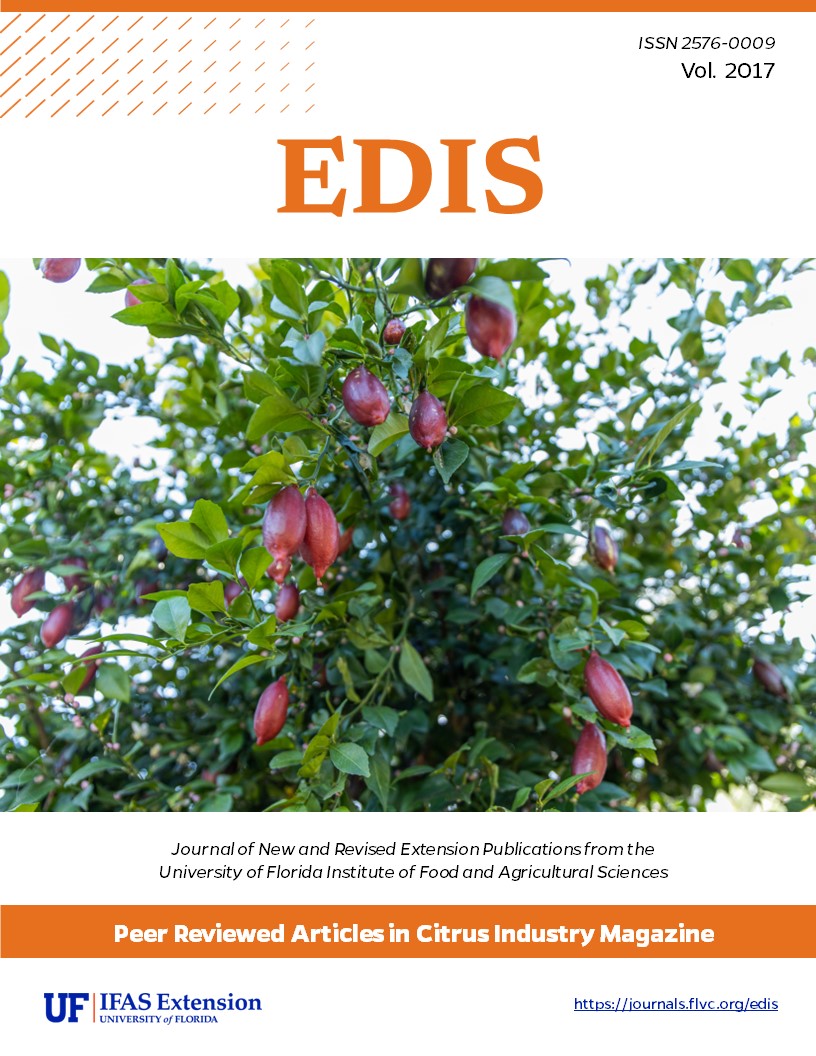Abstract
Huanglongbing (HLB), greening, and yellow shoot are names for the most devastating citrus disease in the world. Symptoms of HLB include a distinctive chlorotic mottle on fully expanded leaves. Infected shoots are stunted and branches gradually die back as the symptoms appear in other sectors of the tree canopy. HLB reduces fruit size, weight, and other fruit quality variables, such as total soluble solids (TSS) content, acidity, and TSS/acidity ratio. In Florida, HLB incidence is approaching 100% infected trees except in groves less than 5 years old. The Florida orange forecast, at 72.0 million boxes, is down 12 percent from last season's final utilization, the lowest in the modern history of the citrus industry. Yield is most obviously reduced by fruit drop and small fruit size caused by infection of fibrous roots by the phloem-associated bacterium Candidatus Liberibacter asiaticus (Las). Our research established that fruit drop depends on loss of fibrous roots responsible for water and nutrient uptake. This article will update our latest findings regarding management practices that are most important to sustain root health in Florida citrus groves.

